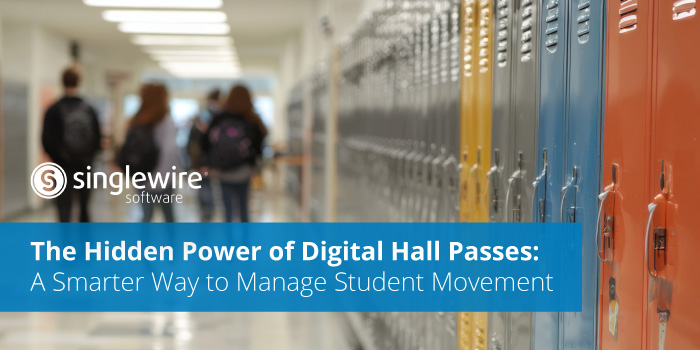Rethinking the Approach
Traditionally, schools have relied on handwritten slips and verbal permissions to track students moving through hallways. However, schools must now balance student safety, operational efficiency, and accountability, and standard hall passes are no longer enough.
That’s why schools are starting to turn to digital hall passes, a modern, data-driven alternative that goes far beyond paper slips. These tools give administrators real-time visibility into student movement, reduce hallway disruptions, and support stronger safety protocols—all while streamlining the daily routines that keep schools running.
This blog explores why digital hall passes are gaining traction, how they support both daily operations and safety goals, and why now is the time for schools to rethink their approach to this process.
Why Traditional Hall Passes Fall Short
For most schools, the hall pass system hasn’t changed in decades. A student asks to leave class, receives a paper slip or physical token, and walks through the halls. But this analog approach has significant limitations:
- No real-time visibility: Once a student leaves, staff have little insight into where they are or how long they’ve been gone.
- Inconsistent practices: Each teacher may issue passes differently, leading to confusion and lack of standardization.
- Lost or damaged passes: Paper slips are easily misplaced or forged, reducing accountability.
- Limited data: Schools have no way to analyze patterns like frequent hallway use, peak times, or repeated disruptions.
These gaps can lead to hallway congestion, make it harder to respond quickly during emergencies, and allow problematic behaviors (like skipping class or meeting up in off-limits areas) to go unchecked.
Digital Hall Passes: More Than a Modern Convenience
Digital hall pass systems rely on software to issue, track, and manage student movement in real time.
This offers schools several key benefits, including:
- Real-time tracking: Administrators and security staff can see who is out of class, where they’re headed, and how long they’ve been away.
- Standardized procedures: All teachers follow the same digital process, reducing inconsistencies.
- Automated limits and rules: Passes can be configured with time limits, location restrictions, or capacity rules (e.g., only two students per bathroom at once).
- Data analytics: Schools can analyze usage trends to identify hotspots, repeat offenders, or time periods needing more supervision.
- Enhanced accountability: During incidents, knowing exactly who’s in the halls or bathrooms allows staff to ensure all students are accounted for.
Digital hall passes turn what was once a manual, fragmented process into a centralized operational tool that can be automated to support safety, discipline, and accountability.
Operational Efficiency Meets Safety
While digital hall passes are often introduced to address student discipline and hallway management, they also play a critical role in safety:
- In emergency situations, administrators can use pass data to identify students who are not in classrooms and send targeted instructions through the same communication platform.
- During lockdowns or evacuations, knowing student locations helps staff ensure no one is left behind.
- Real-time visibility reduces the risk of unauthorized student movement, making it easier to secure campuses.
Why Now?
Schools are facing increasing pressure to improve safety protocols without overburdening staff. Digital hall passes offer:
- Quick implementation: Many systems can be rolled out with minimal infrastructure changes, using existing devices.
- Cost-effective modernization: Compared to larger capital investments, digital hall pass software provides meaningful impact at a relatively low cost.
- Integration opportunities: Leading solutions can tie into visitor management, notification systems, and incident management platforms, creating a unified safety ecosystem.
Moreover, these systems are used every day, providing schools with ongoing value.
Practical Implementation Tips
For schools considering the move to digital hall passes, here are a few steps to set the stage for success:
- Engage key stakeholders early: Involve teachers, security staff, IT, and administrators in the selection process to address concerns and build buy-in.
- Start with a pilot: Roll out digital hall passes in one wing, grade level, or school to refine processes before district-wide adoption.
- Establish clear policies: Define pass limits, timeframes, and consequences to ensure consistent application across the district.
- Train staff and students: Provide simple, hands-on training to ensure smooth adoption.
- Leverage the data: Use reporting to adjust hallway monitoring schedules, identify patterns, and strengthen policies over time.
Small Upgrade, Big Impact
Digital hall passes might seem like a small operational upgrade, but their impact is far-reaching. By standardizing processes, enhancing visibility, and integrating with safety systems, they give schools a powerful tool to manage student movement while reinforcing broader safety goals.
As schools continue to modernize their infrastructure, digital hall passes represent one of the simplest, smartest steps toward a more secure and efficient campus. For more information about solutions for your school, visit our Hall Manager page.
